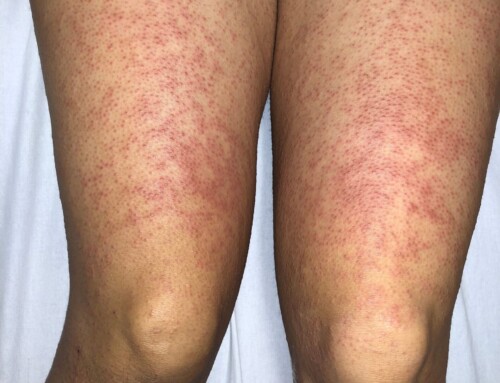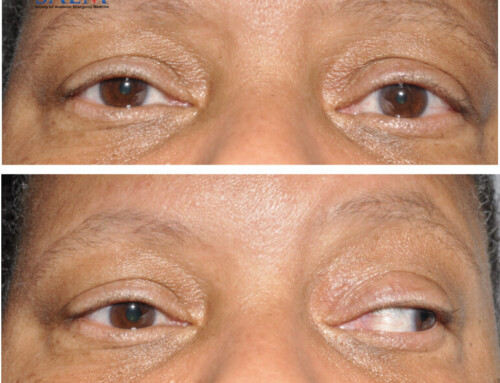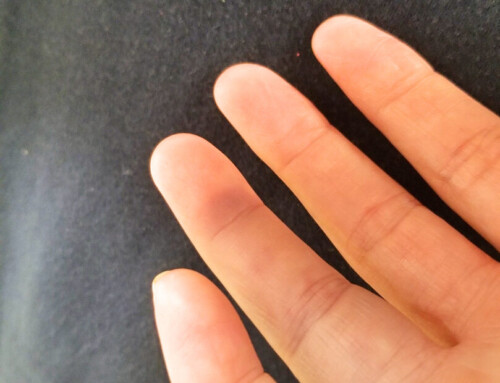
A 33-year-old female presented with a progressively worsening rash for one week. The patient just finished hiking the John Muir Trail, a backpacking trip that encompassed three weeks and over 240 miles. On the last days of the trip, the patient started to develop a severely itchy, red rash on both feet. She tried using a topical anti-fungal, which seemed to make the rash worse. She now has swelling and difficulty walking. The rash does not involve the hands or other parts of the body. She denies fever, open wounds, nausea, vomiting, or systemic symptoms, and has never had a similar rash before.






